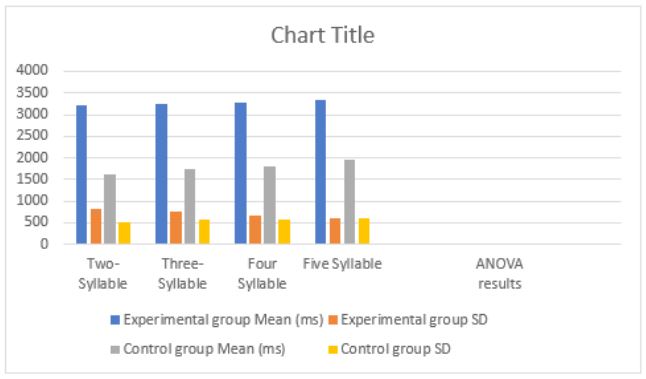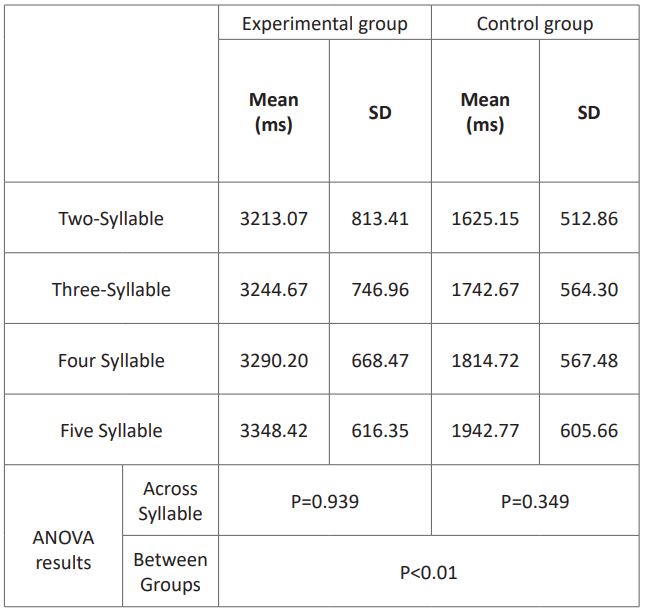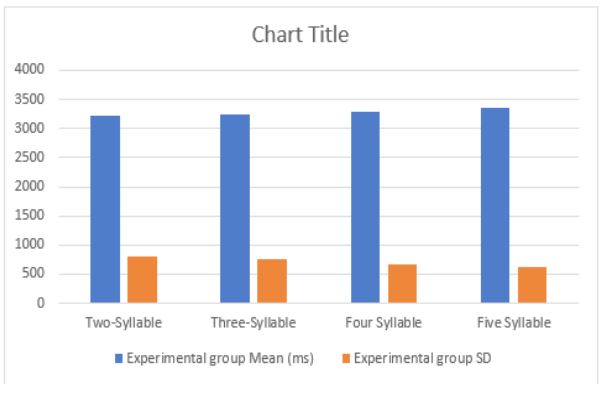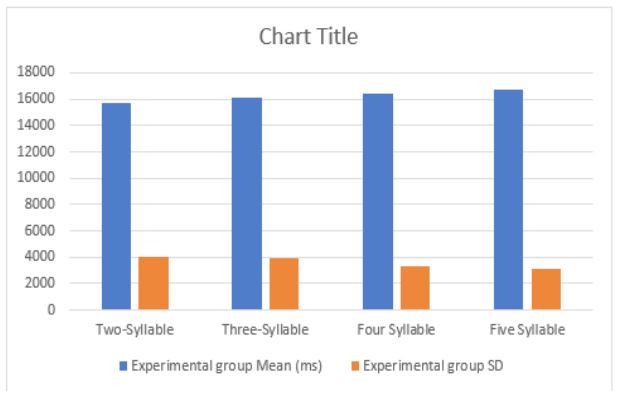Review Article - Volume 2 - Issue 6
Unravelling the Covert Role of Subcortex in Lexical Decision of Pseudowords
Girija PC* ; Amal Sharafudheen; Reshma Francis
Department of Audiology and Speech Language Pathology, AWH Special College, Kozhikode, Kerala, India.
Received Date : Sep 28, 2022
Accepted Date : Nov 02, 2022
Published Date: Nov 25, 2022
Copyright:© Girija PC 2022
*Corresponding Author : Girija PC, Associate Professor and Head, Department of Audiology and Speech Language Pathology, AWH Special College, Kozhikode, Kerala, India-673003.
Email: pcgirija@rediffmail.com
DOI: Doi.org/10.55920/2771-019X/1304
Abstract
A pseudoword is one that could exist in a language in that all of its sounds and combinations are permitted, but it has no meaning whatsoever. The subcortex is the part of the brain that lies directly below the cerebral cortex. Structural and functional alterations to the subcortical structures will have an impact on the person’s semantic and phonological processing, which will eventually slow down their capacity to distinguish words and pseudowords. Aim of our study was to analyse the impact of subcortical lesions on participants’ abilities to recognize pseudowords through a lexical decisionmaking task. Participants included 20 people with subcortical lesions (experimental group) between the ages of 40 and 60 years, and 20 neurotypical adults (control group) between the ages of 41 and 50 and 51 and 60 years. The participants were shown the list of 20 selected words and pseudo words one by one in Malayalam language with varying syllable lengths (2 syllable, 3 syllable, 4 syllable and, 5 syllable lengths) using DMDX software in Auto mode. The lexical decision task was given to the subjects, and the software automatically recorded the reaction time and average task completion time in milliseconds. On analysis of visual pseudo word recognition abilities based on reaction time and task completion time, experimental group were significantly affected than control group. The mean reaction time and task completion time increased gradually on analysis of the impact with increasing pseudoword complexity in experimental group. This study substantiates that in addition to functional cortical structures, normal subcortical structure functioning plays an inevitable role in pseudoword recognition. The results will be helpful in developing intervention techniques to enhance cognitive-linguistic processing.
Introduction
Pseudowords are words that may be read using the graphemephoneme rule but have no sense or meaning. A pseudoword, according to [1], is a string of letters that looks like a real word in terms of orthographic and phonological structure but does not exist in the language. During non-linguistic visual feature detection task, the visual field will activate extensive widespread brain areas [2]. Pseudoword recognition necessitates the proper functioning of subcortical structures, in addition to intact cortical structures. Subcortical structures are a group of diverse neural formations deep within the brain which include the Diencephalon, pituitary gland, limbic structures and basal ganglia. When the subcortical structures are affected, the individuals semantic and phonological processing will also be affected and eventually decelerate the ability to recognize words and pseudowords.
Need for the study
This study will enable us to understand the impact of subcortical lesion on pseudoword recognition abilities. Since this task requires conflict resolution and lexical decision, this study will be beneficial in establishing intervention strategies to improve cognitive-linguistic processing.
Aim
To analyse the effect of subcortical lesion on pseudoword recognition abilities by the task of lexical decision in pseudowords by using the DMDX software.
Objective of the study
• To compare the performance of Neurotypical adults (control group) and individuals with subcortical lesion (experimental group) on visual pseudoword recognition abilitiesbased on reaction time and task completion time.
• To analyse the impact of subcortical lesion on visual pseudoword recognition abilities with increasing pseudoword complexity based on reaction time and task completion time.
Method
Participants
Participants consisted of 20 individuals with subcortical lesion (experimental group) in the age range of 40 to 60 years and 20 neurotypical adults (control group) in the age range of 41- 50 years and 51 -60 years. The participants of experimental group were selected from theDepartment of speech language pathology, AWH special college, Calicut.The participants of control group were selected from different localities in the Calicut district of Kerala.
Inclusion Criteria
Control Group
• Participants should not have any history of neurological, speech-language and, psychological problems.
• Participants should have Malayalam as their mother tongue.
• Participants should have an education of at least 10th standard.
• Participants should be able to speak, read and write Malayalam.
• Participants should be physically fit to carry out the test.
• Participants should have normal/corrected vision and hearing.
Experimental Group
• Participants should be diagnosed to have subcortical lesions without any cortical involvement by a radiologist, neurologist, and speech language pathologist.
• Participants should not have any history of speechlanguage and psychological problems.
• There should not be a history of brain injury due to trauma and the presence of atrophic changes in the brain.
• Participants should score aphasic quotient above 97 on the Western Aphasia Battery test for indicating the absence of aphasic component.
• The post-morbid period for testing experimental group is from 6 months to 1 year.
• Participants should have Malayalam as their mother tongue.
• Participants should have an education of at least 10th standard.
• Participants should be able to speak, read and write Malayalam.
• Participants should be physically fit to carry out the test.
• Participants should have normal/corrected vision and hearing.
List of words and pseudowords were developed, consisting 20 words and 20 pseudowords in Malayalam language with varying syllable lengths (2 syllable, 3 syllable, 4 syllable and, 5 syllable lengths). The words were taken from the speaking vocabulary of adults in the increasing order of syllable length i.e., a set of five words at 2 syllable length, 3 syllable lengths, 4 syllable lengths and, 5 syllable lengths. A pilot study was carried out for constructing the pseudowordsthrough selecting a list of hundred meaningful Malayalam words with varying syllable lengths (2 syllable, 3 syllable, 4 syllable and, 5 syllable lengths). These words were then converted to pseudowords by following the rule [2] by rearranging the letters of the familiar words into pronounceable letter strings. The criteria’s followed while developing pseudowords were such that it followed the phonotactic rules of the Malayalam language, the consonants and the syllable length of the original word were maintained and the sounds of the pseudowords were within the phonetic inventory of the selected participants. The selected words and pseudowords were shuffled together according to the syllable length for the order of presentation using DMDX software – Auto mode (Forster & Forster 2003). The duration for the presentation of each word and pseudoword were determined by administering trials of DMDX on various time durations such as a trial of 5 seconds, a trial of 10 seconds and, a trial of 15 seconds on five adults in each age group and on five individuals with subcortical lesion to choose the best duration that provides the appropriate response. The time duration for each frame of words and pseudowords for all the syllable length was chosen as 10 seconds. The total duration of administration was 6.6 minutes.
Administration
The list of words and pseudowords were presented one-byone to the selected participants by using DMDX software – Auto mode (Forster & Forster 2003). The words and pseudowords were presented for 10 seconds for all syllable lengths (2 syllable, 3 syllable, 4 syllable and, 5 syllable lengths). During administration, the subjects were made to involve in the lexical decision task (to press the left shift key if the presented stimulus is a word, if not then press the right shift key). The reaction time (duration between the appearance of the stimulus and the pressing of the key) were automatically recorded by the software in the units of milliseconds. If any participant fails to complete the task (not pressing any shift key), then a score of 4000.00msec was automatically set by the software.
Results
To analyse the performance of Neurotypical adults and individuals with subcortical lesion on visual pseudoword recognition abilities based on reaction time and task completion time.
Figure 1: Mean Reaction Time and Standard Deviation obtained for pseudowords in experimental group and control groups.
Table 1: Reaction Time: Mean, Standard deviation (SD) and ANOVA results.
Figure 2: Mean Task Completion Time and Standard Deviation obtained for pseudowords in experimental group and control groups
Table 2: Task Completion: Mean, Standard deviation (SD) and ANOVA results.
Results of (Tables 1.1 and 1.2) showed that reaction time and task completion time of experimental group (individuals with subcortical lesion) were significantly affected than control group (neurotypical adults). Our findings prove that subcortical structures have crucial role in processing pseudowords. This can be explained through the process of visual word recognition.
Once a word is presented to the individual, according to [3], the whole word may be viewed initially and then recognition is achieved when the characteristics of the stimulus match with the orthography. This initial process will be governed by the visual form areas of cerebral cortex, then it proceeds to the lexical level where the individual will map the word using orthographic image. This stage is controlled by temporal cortex. The final stage involves the judgement and execution which necessitates the involvement of pre-frontal cortex. Subcortical structures like basal ganglia and thalamus through its strong connection with pre-frontal cortex specifically dorso-lateral pre-frontal cortex mediates the cognitive linguistic function. So, it can be interpreted that a small disturbance to the subcortical structures will affect an individual’s word recognition abilities.
In addition to that, globus pallidus and caudate nucleus are highly involved in maintenance of orthographic input in working memory and match the input on to stored representations by the selection ofappropriate lexical items and the inhibition of non-matching words [4]. So, in the present study due to pathological changes,participants in the experimental groupbecome incompetent in activating, integrating, and coordinating various skills which are indispensable to react and carryout complex tasks compared to control group. Hence it resulted in increased reaction time and task completion time. 1. To analyse the impact of subcortical lesion on visual pseudoword recognition abilities with increasing pseudoword complexity based on reaction time and task completion time.
Figure 3: Mean Task Completion Time and Standard Deviation obtained for pseudowords in experimental group and control groups.
Figure 4: Mean Task Completion Time and Standard Deviation obtained for pseudowords in experimental group.
Results are represented in (Table 1.1 and 1.2) which shows that the mean reaction time and task completion time increased gradually with increasing pseudoword complexity. From the above table, it could be interpreted that the processes involved for recognizing five syllable pseudoword becomes complex and requires more time than that of two syllable pseudoword. Hence the mean reaction time and average task completion time increases with increasing pseudoword complexity even though it was not significant. Our results are in consonance with the findings of [5], who reported that syllable length has effect on lexical decision.
This finding can be justified with the fact that, as the complexity of the task increases, individual has to activate semantic representations and phonological associations more strongly for lexical decision. Lesion to subcortical structures may affect their working memory, recognition familiarity and recollection for comparing the pseudoword with the lexical knowledge, selective attention for processing the letter strings and processing speed for responding as faster. As a result, participants will become less efficient in coordinating and executing cognitivelinguistic mechanism underlying these processes.
Conclusion
Findings of our study substantiate that, subcortical structures have vital role in processing pseudowords .Pathological changes to these structures may impact the essential skills such as selective attention, working memory, activation of lexical and orthographic knowledge and faster execution.
Implications of the study
To gain knowledge regarding the impact of sub cortical lesion on pseudo word recognition abilities. To gain knowledge regarding the nature of impairment in visual pseudo word recognition abilities in individuals with subcortical lesion and plan appropriate rehabilitation strategies to improve their ability in reading, word perception, lexical recognition, and lexical familiarization.
Limitations
• Smaller size of experimental group.
References
- Nordquist Richard. Definition and Examples of Pseudowords. 2020. Retrieved from https://www.thoughtco.com/pseudoword-definition-1691549
- Price CJ, Wise RJ & Frackowiak RS. Demonstrating the implicit processing of visually presented words and pseudowords. Cerebral cortex. 1996; 61: 62-70.
- Duffau H, Moritz-Gasser S & Mandonnet E. A re-examination of neural basis of language processing: Proposal of a dynamic hodotopical model from data provided by brain stimulation mapping during picture naming. Brain and Language. 2014; 131: 1-10.
- Braun M, Kronbichler M, Richlan F, Hawelka S, Hutzler F & Jacobs AM. A model-guided dissociation between subcortical and cortical contributions to word recognition. Scientific reports. 2019; 9(1): 1-12.
- Chetail F. Effect of number of syllables in visual word recognition: new insights from the lexical decision task. Language, Cognition and Neuroscience. 2014; 29(10): 1249-1256.







